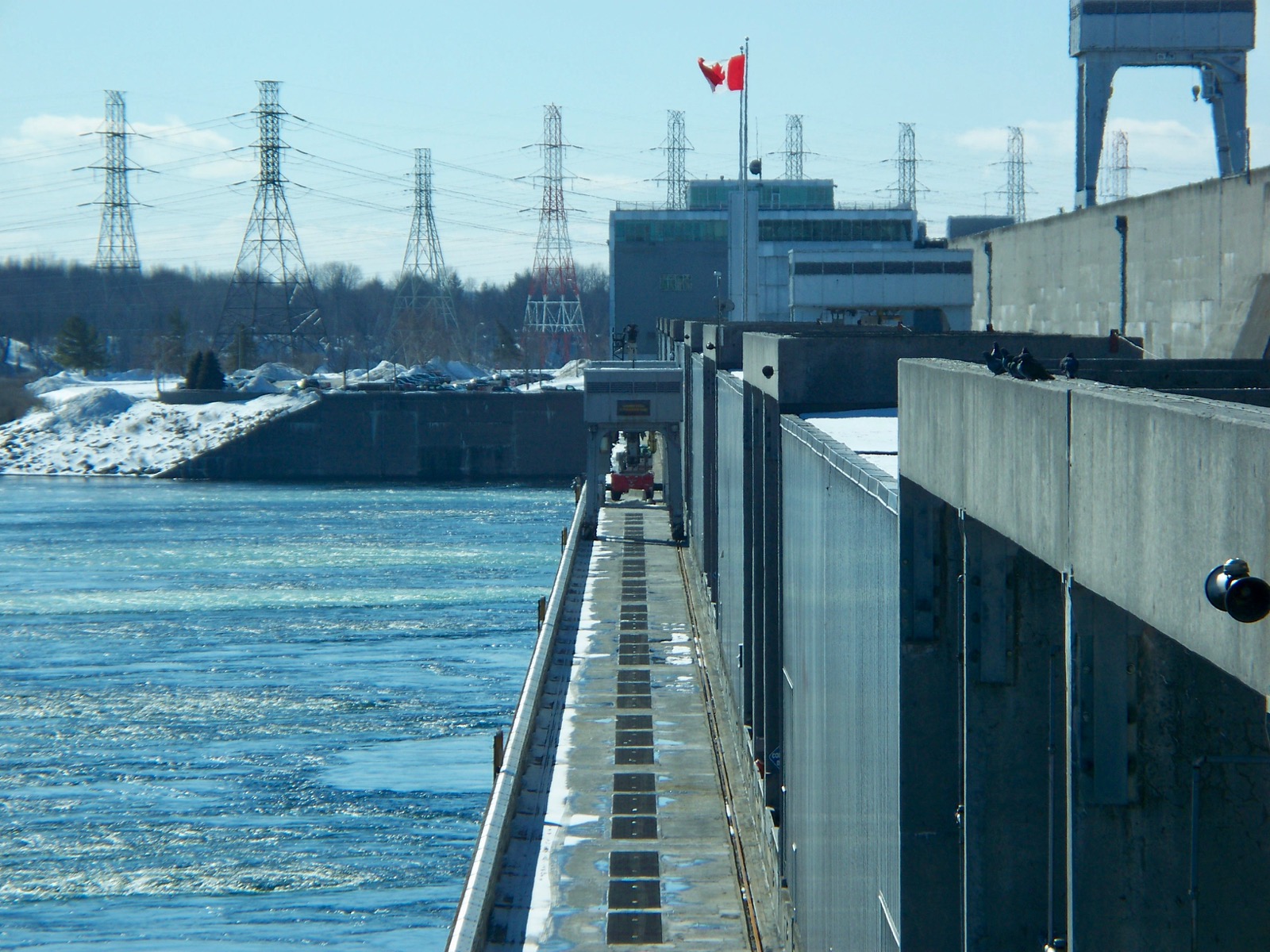Enbridge Seeks Deal With Akwesasne Mohawks
By Doug George-Kanentiio Credit goes to the Mohawk leadership for trying to find a way to relieve the extraordinarily high utility rates paid by homes throughout Akwesasne. Those costs take a major bite out of the budgets for the families, a situation which is galling whenever one drives across the International Bridges, looks to the west and sees the St. Lawrence Power Dam, the largest source of hydro electrical power in the region-and knowing that both the land and the water used by that facility are a part of our resources, never ceded, never sold. The amount of power coming from the dam (named after Robert Moses, an individual whose anti-Native and anti-environment record is staggering) generates almost 2,000 megawatts of electricity. Akwesasne has an estimated 5,000 homes and one megawatt makes enough energy for 650 residences, hence the domestic needs for every home would be about 6.5 megawatts or less than 0.35 percent of the total which is virtually nothing to the New York Power Authority and Ontario Power Generation, the co-owners of the dam. Yes, those two entities may claim to own the dam but it is well established under law that aboriginal people own the waters which flow though our territory and can make a reasonable demand that we must be justly compensated for that resource. Securing free hydro for every home in Akwesasne is not only reasonable it is just. The question is for the people of Akwesasne is why none of the three governing councils have done this? The lack of a collective strategy and the high energy costs on our territory has led to the current situation in which natural gas is seen as an alternative. But this raises a very serious credibility issue with those Mohawks who have embraced the traditional ecological values and who have stood in unity with other Native nations opposed to oil lines, gas lines and hydrofracking.
Just 16 months ago Mohawks from Akwesasne went to North Dakota to support the Lakota people in their opposition to the Dakota Access Pipeline (DAPL). Remember how the people captured world wide attention in the "Water for Life" protests? Remember the attacks upon those people, the use of dogs, the efforts to make such actions violations of state law with heavy financial fines and long jail terms? Now comes Enbridge, a company which specializes in carrying oil and natural gas through pipelines across the continent including Akwesasne. This company, headquartered in Calgary, owns 30 percent of Dakota Access and bears responsibility for the the crisis at Standing Rock. It is the same company which is pressing for completion of a plan called Line 3 which would replace an existing oil pipeline across Saskatchewan, Manitoba and Minnesota and through Anishnabe territory, the allies of the Haudenosaunee. The Anishnabe at Leech Lake and Fond Du Lac oppose Line 3. Do we stand with them or enter into another contract with Enbridge? According to the web site Line 9 Communities, Enbridge had over 804 oil spills through its lines from 1999-2010 resulting in 161,000 barrels spilling into the environment. It has paid millions in fines and this spring found its oil lines on the bottom of Lake Michigan are at risk. Yet the company wants to connect the Alberta tar sands oil with a shipping port in Superior, Wisconsin for the 760,000 barrels pumped through Line 3 each day. The Environmental Office at Leech Lake calls this a "horrific recommendation" and they will stop it if they can. When it comes to Akwesasne there is another concern. Enbridge transports gas taken from the earth by hydrofracking, a process which uses hundreds of millions of gallons of water to force gas from deep within the earth to the surface. The effects on communities in places such as northern Pennsylvania has been well documented with others claiming hydrofracking is causing earthquakes in Oklahoma and Missouri. Enbridge takes that gas from the Marcellus field through its lines across Ontario and north of Cornwall. It may well claim the pumping is safe but New York State refused to allow a pipeline across the southeastern part its territory, a decision upheld last week by the US Supreme Court. If New York State, with all of its environmental safeguards rejects these pipelines as unsafe does that not send an alarm to Akwesasne? It is not as if we do not know the impact of extracting oil a and gas from within the earth-those things were placed there by the Creator and we were warned to leave them buried with devastating consequences if we brought them to the surface. It is clear there are alternatives to using Enbridge's "natural" gas for our homes. We can reduce costs by increasing efficiency or attaching solar and wind power to every district. We can abide by our ancestral morals and reject the Enbridge deal by moving to secure power from our waters. Or we can overturn the support the Mohawks pledged to our Native friends and allies and make a deal with a company which is particularly hostile to indigenous peoples. In the end, it is not within the power of any council to make this decision -- it is for the people to make this determination. Doug George-Kanentiio, Akwesasne Mohawk, is the vice-president of the Hiawatha Institute for Indigenous Knowledge. He has served as a Trustee for the National Museum of the American Indian, is a former land claims negotiator for the Mohawk Nation and is the author of numerous books and articles about the Mohawk people. He may be reached via e-mail at: Kanentiio@aol.com or by calling 315-415-7288.
Join the Conversation

